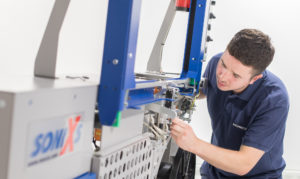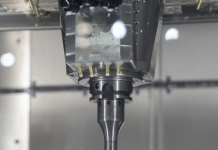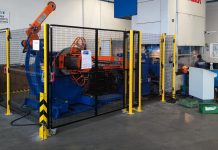As we begin the start of a new year, businesses everywhere will start to make plans. It might be time for a thorough review of your processes and operations. And if you work in manufacturing, you might find that your equipment is in serious need of an upgrade. Leasing rather than buy should be a new way for investment.
 One of the major issues facing businesses is that equipment tends to degrade over time. Even if your old machinery is still going strong after decades, repairs and maintenance can be a hidden cost, and you cannot afford any downtime. What’s more, if your competitors are using the very latest technology, they’ll always be able to do things faster and more efficiently than you. For your business to remain competitive, it’s not enough for your equipment to be simply fit for purpose. You need to stay on top of advances in technology and processes. If you make a point of regularly upgrading your equipment, you’ll always be able to satisfy your clients and customers with products and services that are truly state of the art. It can be prohibitively expensive to invest in completely new machinery every few years. Here strapping machine manufacturer, Mosca, looks at why businesses should consider leasing, rather than buying new equipment.
One of the major issues facing businesses is that equipment tends to degrade over time. Even if your old machinery is still going strong after decades, repairs and maintenance can be a hidden cost, and you cannot afford any downtime. What’s more, if your competitors are using the very latest technology, they’ll always be able to do things faster and more efficiently than you. For your business to remain competitive, it’s not enough for your equipment to be simply fit for purpose. You need to stay on top of advances in technology and processes. If you make a point of regularly upgrading your equipment, you’ll always be able to satisfy your clients and customers with products and services that are truly state of the art. It can be prohibitively expensive to invest in completely new machinery every few years. Here strapping machine manufacturer, Mosca, looks at why businesses should consider leasing, rather than buying new equipment.
The Problems with Buying Your Own Equipment
Some manufacturers don’t like the idea of leasing. There is certainly an appeal to buying your own equipment since it is an essential company asset, and of course, you want complete ownership and control when it comes to your assets. The problem with ownership is that, by extension, you are also responsible for any problems that may occur. We’re not just talking about ongoing maintenance and repairs. You will have to upgrade or replace your equipment eventually, and few businesses consider what they’re going to do with their machinery once it reaches the end of its life cycle. If you own your own equipment, you’re responsible for ensuring that it’s properly, lawfully and efficiently disposed of when it’s no longer fit for purpose. This can be costly and immensely time-consuming, not least because most industrial and manufacturing equipment is large, heavy, and cumbersome. Of course, you could choose to sell your old equipment instead, but even this can prove more complicated than you might think. It might take longer than you think, and any time spent looking for a buyer could be better spent managing your core business. And that’s assuming that you’re able to find a buyer at all – you can’t be sure that your old equipment will even still have value at the end of its life-cycle. Disposing of old equipment is easier said than done, and many businesses will struggle to find a buyer for their old assets. You don’t want to waste your valuable warehouse or factory space on storing equipment that’s past its sell-by date. When you have complete ownership of your machinery, this is the sort of logistical nightmare you have to look forward to once it’s time to upgrade or replace. But if you choose to lease instead, you’ll never have to worry about disposing of your equipment at the end of its life-cycle.
The Benefits of Equipment Leasing
If you choose to lease your equipment, you’ll only ever use your machinery during its most trouble-free years – when everything’s working like it should, at maximum output and efficiency.
Leasing also gives you the opportunity to think beyond your budget. You’ll be able to choose the most advanced machinery fitted with the most up-to-date technology, without tying up large amounts of your valuable cash flow. The sort of high-spec machinery that’s out of your price range when buying could be perfectly affordable when leasing. In this way, leasing equipment could give your business an essential boost in terms of output, efficiency, and the standards of service you’re able to provide. You might not get complete ownership of your assets, but you could still get an excellent return on your investment. Your business would be entitled to 100% tax relief on every rental payment you make. If 100% of every rental is off-set against pre-tax profits, you make a saving of 20% Corporation Tax on the entire sum over the full rental period. Leasing equipment also means that you are able to upgrade to the newest models and you avoid the added worry of unexpected costs if a fault should occur. Yes, there are downsides to leasing. Ultimately, you’re paying for a depreciating asset at a non-depreciating rate. In this way, leasing might end up costing you more than an equivalent loan. Similarly, some business owners are opposed to the idea of simply leasing one machine after another, as it means that those monthly leasing payments will essentially go on forever. And as we’ve said, some people just really like the idea of owning their own assets… So yes, it might be cheaper in the long-run to take out a loan to buy new equipment. But leasing equipment can be almost twice as tax efficient as any outright purchase over the term of hire.
Leasing vs Buying – Which is Best for Your Business?
If you want to get a competitive edge and a new lease of life for your business in 2019, upgrading your equipment would undoubtedly be a great place to start. Some might argue that manufacturers are only as good as the equipment they use, as so many things depend on the quality of your assembly-line. New equipment could help you to make significant improvements to the efficiency of your processes, saving both time and energy as well as money. So whether you lease or buy, you’re bound to see a great return on your investment. You might think that buying new equipment outright is out of your budget, and you might have written off the idea of a loan as too risky. But even if this is the case, leasing could still give you access to the latest high-tech machinery your business needs to make 2019 a record year.



